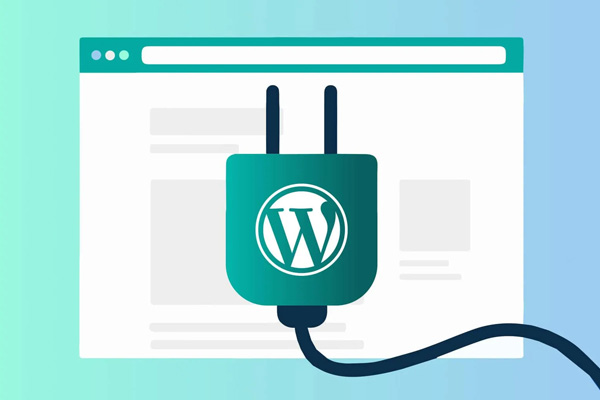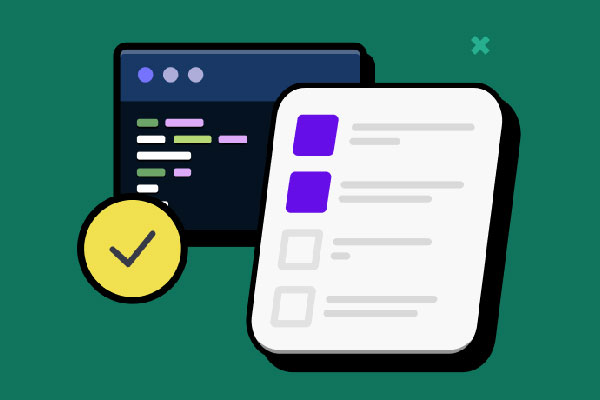
Choosing between AVIF and WebP for web images is more than just picking a file format; it’s about optimising web performance. In this comparison of “AVIF vs WebP which file format is better,” we dig into the crucial aspects of both to help you understand which delivers on size, quality, and support – key considerations for any web project.
Expect an in-depth look at how AVIF and WebP stack up against each other without tipping the scales prematurely.
Table Of Contents
Key Takeaways
- AVIF offers greater image compression and quality, especially for precise graphics and text, while WebP balances quality with smaller file sizes and supports both lossy and lossless compression along with transparency and animation.
- AVIF, using advanced AV1 codec compression, handles high color depth and HDR, making it well-suited for vivid and detailed images; WebP, although more prone to artifacts, provides widespread compatibility and has been widely adopted with extensive browser support.
- Browser support is key for the adoption of an image format; AVIF is gaining ground as major browsers like Chrome, Firefox, and Opera support it, while WebP is already supported by most browsers, representing a substantial market share among web users.
Understanding AVIF & WebP
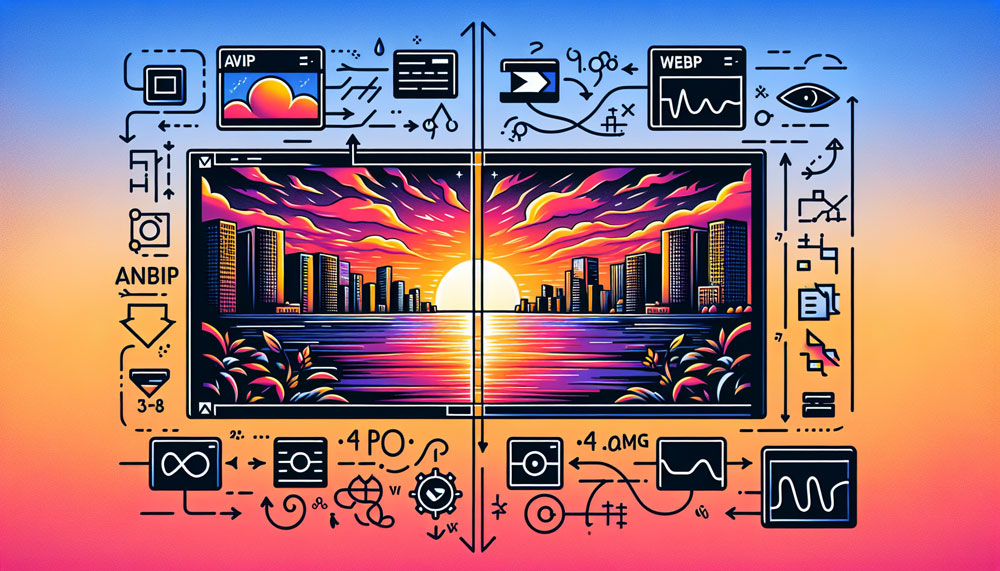
The world of web imagery is witnessing a face-off between two versatile image formats: AVIF and WebP. AVIF, the new kid on the block, is an open-source image format known for its superior image quality and smaller file sizes. Born out of the AV1 video codec, this relatively new image format is becoming increasingly popular for web applications.
On the other side of the ring, we have WebP. This is Google’s brainchild, developed to deliver high-quality images with reduced file sizes. WebP offers a balance between image quality and file size, making it a viable option for various web applications. Now, let’s delve deeper into the capabilities of both these advanced image formats.
What Is AVIF: The New Kid On The Block
The AV1 Image File Format (AVIF) is a contemporary image format introduced in 2019. Utilising the same technology as the AV1 video codec, this file format employs sophisticated compression methods to provide high-quality images while keeping their size manageable. It excels at rendering sharp images involving detailed graphics or text where clear visuals are crucial.
As an open-source and royalty-free file format, AVIF enables usage without incurring licensing fees or encountering legal limitations. It should be mentioned that progressive rendering isn’t supported by this image format. Images will not gradually appear but rather load entirely once the download is complete.
What Is WebP: Google’s Brainchild For Better Images
Google introduced WebP in 2010 as a versatile image format aimed at enhancing website performance while maintaining high image quality. It employs varied compression methods, both lossy and lossless, offering adaptability for compressing images.
The advanced capabilities of WebP include support for transparency and animation. These features enable it to deliver smaller file sizes than GIF and APNG yet still maintain high-resolution images. The structure of a WebP file includes VP8 or VP8L image data enclosed in a RIFF-based container, which facilitates ease of adoption and utilisation.
Technical Aspects of AVIF & WebP
Delving into the technical intricacies of AVIF and WebP reveals the advanced nature of these contemporary image formats. The AV1 codec, originally developed for video streaming services, is utilised by AVIF to achieve efficient image compression. Conversely, WebP leverages the VP8 codec, which provides options for either lossy or lossless compression.
To comprehend how they function, let’s examine closely at the mechanisms powering these two digital image formats.
How AVIF Works
Using the AOMedia Video 1 (AV1) codec, originally developed for video streams, AVIF efficiently compresses both still and motion pictures. High-quality image storage is achieved in the AVIF format through the use of the High Efficiency Image File (HEIF) framework, offering an array of functions that include support for high dynamic range (HDR), as well as options for both lossless and lossy compression techniques.
The following points outline key attributes of the AVIF format:
- It gained standardisation within ISO/IEC 23000-22 in July 2020
- Progressive rendering from top-to-bottom isn’t supported by this format
- Despite this limitation, it excels at delivering images with exceptional quality
How WebP Works
The WebP file format utilises the VP8 video codec as its foundation for reducing image size and employs predictive coding for lossy compression. This method predicts blocks of pixels using information from others, resulting in a 30% smaller file size when compared to jpeg images without sacrificing significant image quality.
WebP can perform lossless compression by reconstructing new pixels through fragments of the image that have already been processed.
An alpha channel or transparency is supported within the WebP format. This feature allows for both lossy and lossless options. The architecture of the WebP container is constructed on RIFF (Resource Interchange File Format), which effectively segments data into manageable chunks.
How Do They Compare?
When comparing AVIF with WebP, various distinct characteristics emerge. One notable advantage of AVIF is that it can reduce file size by up to 50% more than WebP without sacrificing the integrity of image quality. Unlike WebP, which is limited to processing just 8-bit images, AVIF supports a wider range including 8, 10 and 12-bit images thereby enhancing quality due to an increased color depth.
In terms of compression techniques, while WebP accommodates both lossy and lossless compression, giving users the option to balance between image fidelity and file size efficiency. AVIF’s design leans towards preserving high-fidelity in images.
Though currently less prevalent compared to the widely integrated WebP format on online platforms, AVIFS holds potential for future use given its advanced capabilities in compressing files effectively while maintaining superior image quality standards.
Battle Of The Bytes: Comparing File Sizes & Compression Efficiency
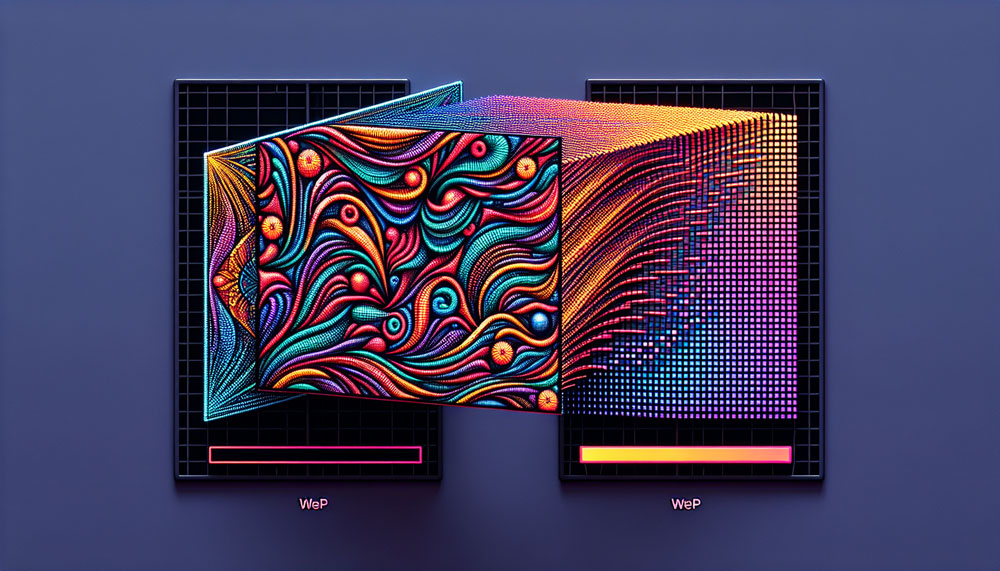
In the realm of web performance, each byte is crucial for SEO. The advent of AVIF and WebP has been largely motivated by the demand for enhanced compression efficiency that leads to diminished file sizes. These image formats have been meticulously crafted to reduce the size of pictures, thus directly influencing website loading times and consequently improving user experience.
Superior Compression Techniques In AVIF
Utilising the sophisticated compression methods derived from the AV1 video codec, AVIF produces highly compressed images that maintain excellent image quality while significantly reducing file sizes. This combination of reduced size and maintained fidelity renders it an appealing choice for web developers and designers who prioritise efficiency.
The ability of AVIF to retain clear, sharp edges and fine text details surpasses what JPEG or WebP can offer, especially when using lower quality settings. The enhanced clarity preservation in scenarios involving text overlays or critical graphics detail highlights its particular suitability for such content where crispness is key.
WebP’s Balancing Act: Good Image Quality With Reduced Size
Conversely, WebP strikes a balance between maintaining image quality and shrinking file sizes. This attribute renders it an adaptable option for assorted web applications. Typically, the size of WebP images is less than that of png and jpeg counterparts.
They compress PNGs by roughly 26% and JPEGs by about 23-34%, all while preserving comparable visual fidelity.
The switch to WebP can lead to substantial reductions in data usage without sacrificing adequate image quality. Facebook’s application for its Android user base exemplifies this efficiency, even though there may be a slightly higher tendency for artifacts with WebP compared to JPEG files.
Visual Fidelity Face-Off: Assessing Image Quality In AVIF vs WebP

Although compression efficiency and file size are paramount considerations, it is essential that the high quality of images is maintained. AVIF and WebP each bring distinct advantages in presenting images with superior quality.
It’s important to evaluate and contrast the level of visual fidelity these two image formats provide.
AVIF’s High-Quality Advantage
The AVIF format is celebrated for its exceptional image quality, accommodating a vast spectrum of color depths such as 8-bit, 10-bit and impressively extending to 12-bit. This enables the representation of a more comprehensive span of colors, greatly amplifying the vibrancy in images.
To this, the ability of AVIF to support high dynamic range (HDR) and wide color gamut (WCG) imaging means it can convey an expansive array of both light and dark shades. As a result, images are rendered with increased realism and clarity due to this enriched tonal variation.
WebP’s Versatility & Quality Trade-Offs
The WebP image format is recognised for its versatility, providing several notable capabilities.
- It incorporates transparency with an 8-bit alpha channel in lossy RGB encoding.
- Compared to PNGs, it yields significantly smaller file sizes when dealing with transparent background images.
- Employ both lossy and lossless compression methods.
- Capable of handling animated images.
Nevertheless, in terms of the sharpness and color richness of the resulting images, WebP can fall short against AVIF. The finer details and colored text might suffer because it uses the older VP8 codec which doesn’t support higher color depths as well as newer formats do.
Browser Battleground: Surveying Browser Support For AVIF & WebP

When selecting an image format, it is essential to consider the extent of its browser support. Although WebP currently enjoys a broader acceptance across browsers compared to AVIF, the adoption rate of AVIF is on the rise with an increasing number of browsers starting to support this newer format.
Charting AVIF’s Adoption Across Web Browsers
The support for AVIF has been adopted by prominent browsers such as Chrome, Firefox, and Opera. Starting with version 97, the Android Browser now supports this format.
Such an increase in the adoption of AVIF by various web browsers signals a bright future for its widespread use and capabilities within the realm of web image optimisation.
WebP’s Broad Browser Support
WebP is supported by a wide range of web browsers, which include:
- Google Chrome
- Safari
- Firefox
- Edge
- Opera
Since the release of Android 4.2 Jelly Bean MR1, WebP has been natively compatible with Android’s default browser.
By 2022, this image format had achieved a remarkable market penetration, being embraced by 97% of web browsers in use at that time.
How To Generate WebP & AVIF File Formats?
For those in web design and development, it is crucial to master the creation of AVIF and WebP images. A range of plugins, libraries, and tools are accessible that assist with transforming pictures into these progressive formats. One of our favourite tools to use is the WordPress Imagify plugin which scans our home page and all inner pages of our website with the option to backup your existing file formats.
Serving AVIF & WebP On The Web
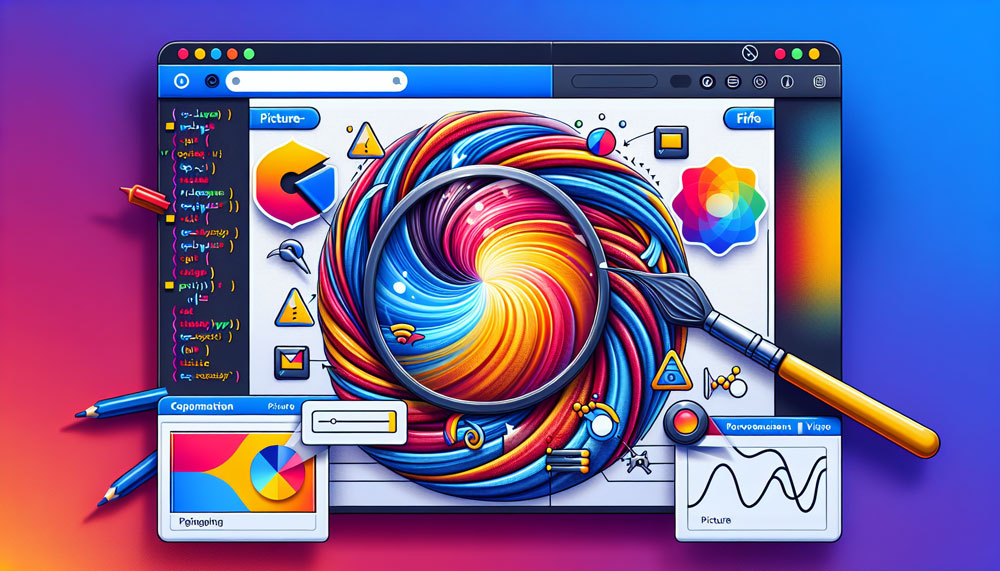
When your AVIF and WebP images are prepared, the subsequent action is to deploy them on the internet. This requires adopting an appropriate strategy that guarantees every user can access the images irrespective of their browser’s features. At this juncture, strategies such as progressive enhancement and employing cloud services play a pivotal role.
Progressive Enhancement With AVIF & WebP
Using progressive enhancement, users with browsers that support AVIF will receive content in this format for an optimal image experience, while WebP is provided to those whose browsers do not support AVIF. This approach guarantees the highest possible image quality without excluding anyone due to their browser’s limitations regarding AVIF compatibility.
Summary
In our journey through the world of AVIF and WebP, we have uncovered the strengths and weaknesses of these two modern image formats. AVIF shines with its superior image quality and smaller file sizes, courtesy of the advanced AV1 video codec. On the other hand, WebP offers a balance between image quality and reduced file sizes, making it a versatile choice for various web applications.
While WebP enjoys broader browser support, AVIF is steadily gaining traction, backed by major tech giants. The future of web imagery is likely to witness a further rise in the adoption of these formats. Whether you’re a developer, a web designer, or simply a tech enthusiast, understanding AVIF and WebP is essential to stay ahead in the rapidly evolving digital landscape.
Frequently Asked Questions
What image format is better than WebP?
The AVIF image format is recognised for its superior compression capabilities to WebP, which allows it to maintain the same level of image quality while yielding smaller file sizes. This efficiency is attributed to advanced compression techniques and an ability to handle greater color depths, making it a more advantageous image format than WebP.
Is WebP a good quality file?
WebP stands out as an image format that provides top-notch lossless and lossy compression, resulting in smaller file sizes while maintaining high-quality images without noticeable quality degradation. This makes it a superb choice for web display of high-quality pictures, offering substantial file size reductions when compared to conventional formats such as PNG and JPEG.
Is AVIF better than PNG?
When it comes to web graphics requiring efficient compression combined with high-quality images, and smaller file sizes, AVIF outperforms PNG. PNG is favored when the priority lies in lossless quality image preservation—such as transparency handling for logos and icons where maintaining supreme image quality is essential.
What are AVIF and WebP?
WebP and AVIF represent contemporary image formats designed to improve web performance and the quality of images. While WebP has achieved wider support and acceptance, AVIF distinguishes itself by providing superior compression capabilities alongside enhanced image quality.
Which format offers better compression and file size?
Overall, AVIF boasts superior compression efficiency and yields smaller file sizes when put side by side with WebP. WebP strikes a harmonious balance between maintaining image quality and minimising file size.
For the utmost in compression capability, opt for AVIF, or choose WebP if you’re seeking to find an equilibrium between preserving image quality while reducing the overall size of files.


